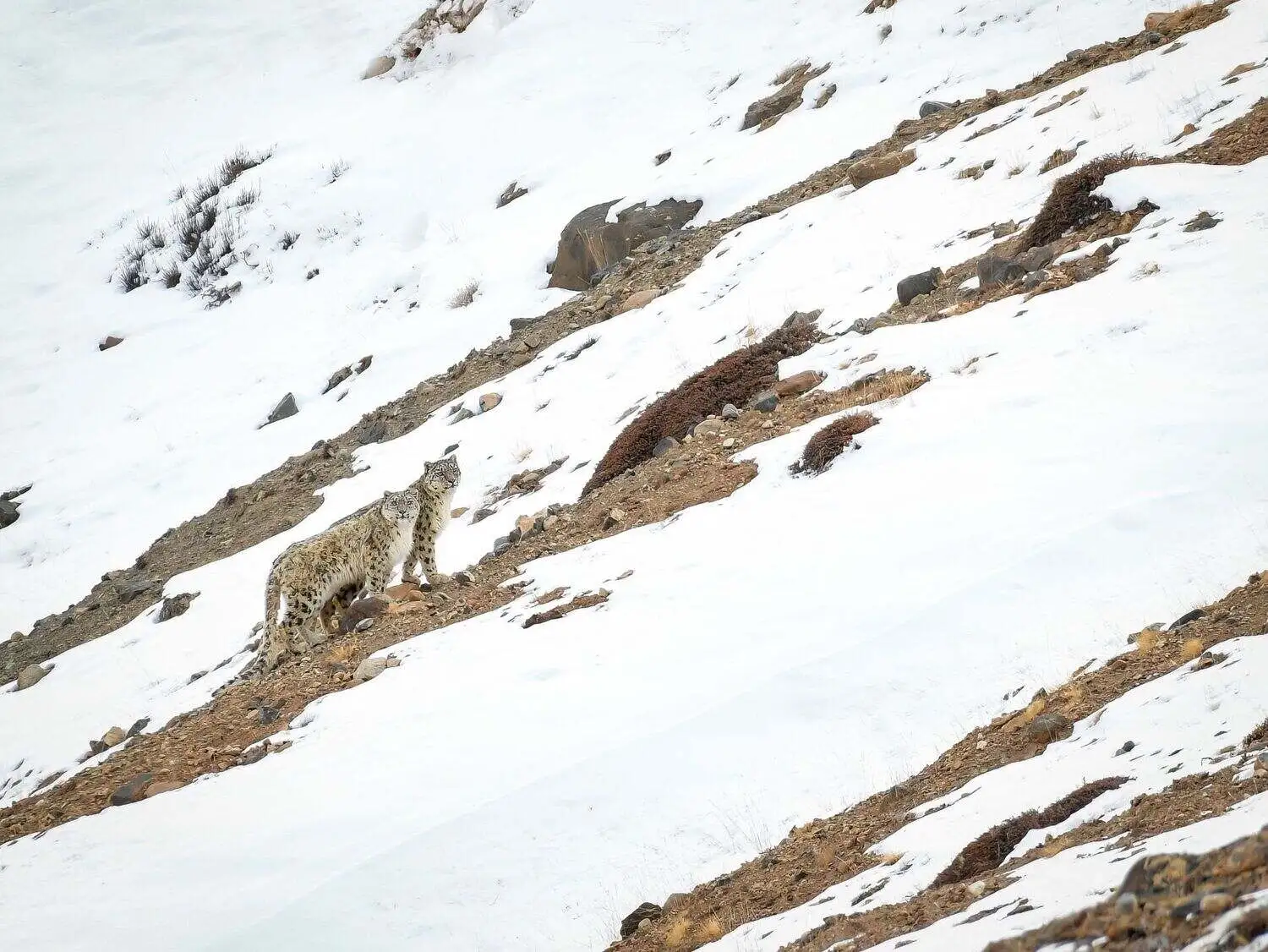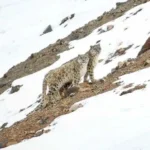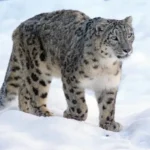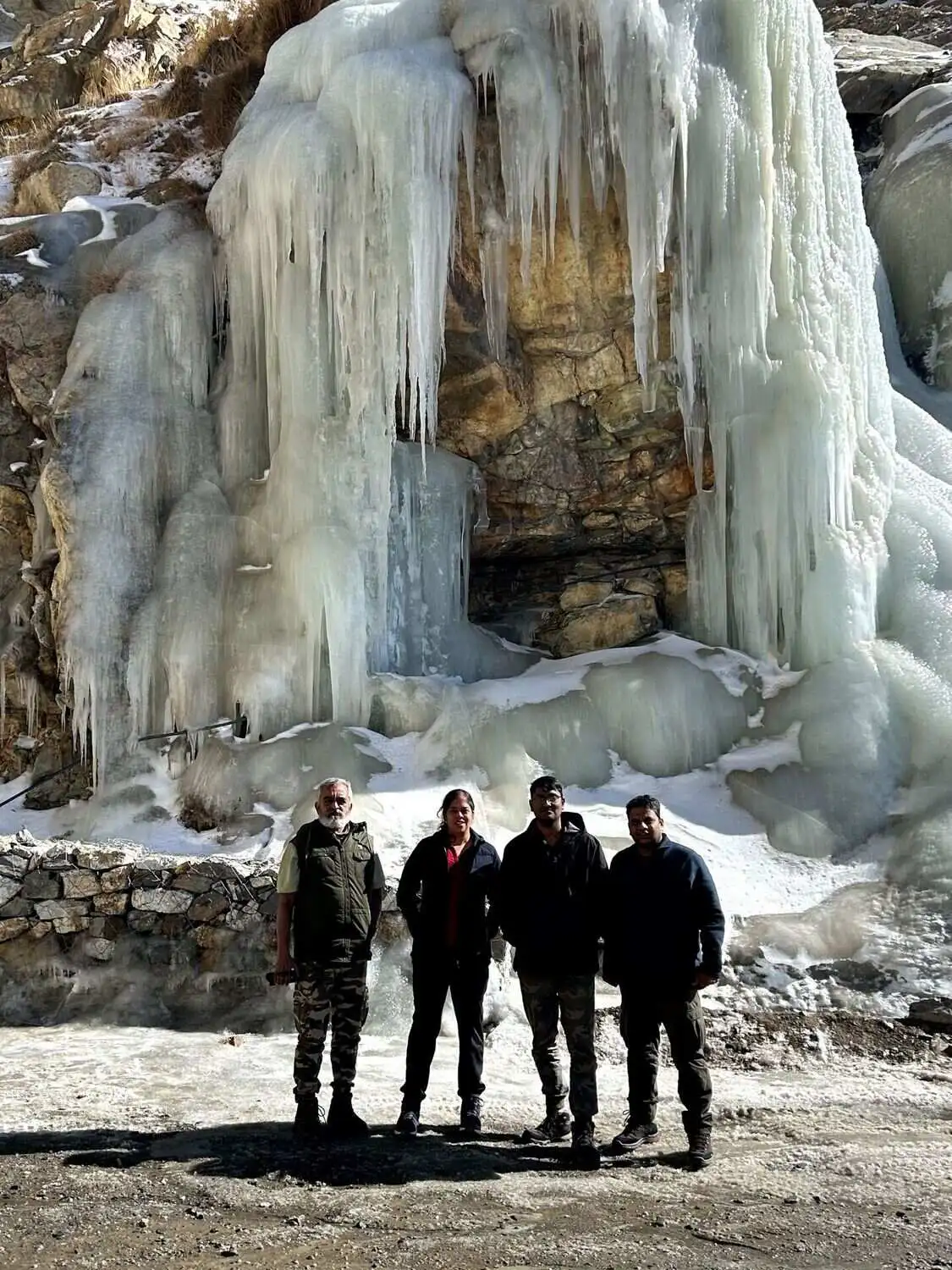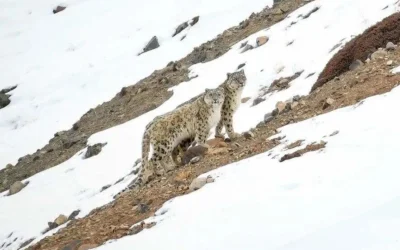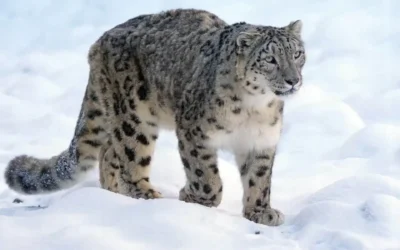High in the rugged Himalayan landscapes, the Himalayan Ibex showcases extraordinary resilience and grace. This mountain-dwelling herbivore is not just an icon of survival in extreme conditions but also a vital player in the Himalayan ecosystem. Whether leaping across craggy cliffs or grazing peacefully, the Himalayan Ibex embodies the wild spirit of these towering peaks.
A Closer Look at the Himalayan Ibex
The Himalayan Ibex (Capra sibirica) is a fascinating member of the goat family. Its strong, muscular frame, paired with iconic, backward-curving horns, makes it one of the most recognizable animals of the Himalayas.
- Size: Adult males can weigh up to 130 kg, while females are lighter and more compact.
- Coat: Thick fur helps them endure freezing temperatures, changing to a lighter shade during summer for camouflage.
- Habitat: Found across the rocky slopes of northern India, Pakistan, and Central Asia, they thrive at altitudes ranging from 3,000 to 5,000 meters.
Quick Facts About the Himalayan Ibex
| Characteristic | Details |
|---|---|
| Scientific Name | Capra sibirica |
| Weight | Up to 130 kg (males); 50-90 kg (females) |
| Horns | Curved, can grow up to 1 meter long |
| Habitat | Rocky slopes, 3,000–5,000 meters altitude |
| Diet | Grasses, shrubs, and mosses |
| Predators | Snow leopards, wolves |
Why They Thrive on Rocky Slopes
The Himalayan Ibex is built to survive on steep, rocky cliffs where few animals dare to go.
- Hooves of Steel: Their specialized hooves have a rough outer layer and a softer, grippy inner pad, allowing them to scale steep cliffs with ease.
- Weatherproof Coats: The thick fur shields them from biting winds and snow.
- Survival Instincts: They are incredibly vigilant, often spotting predators like the snow leopard before the predator spots them.
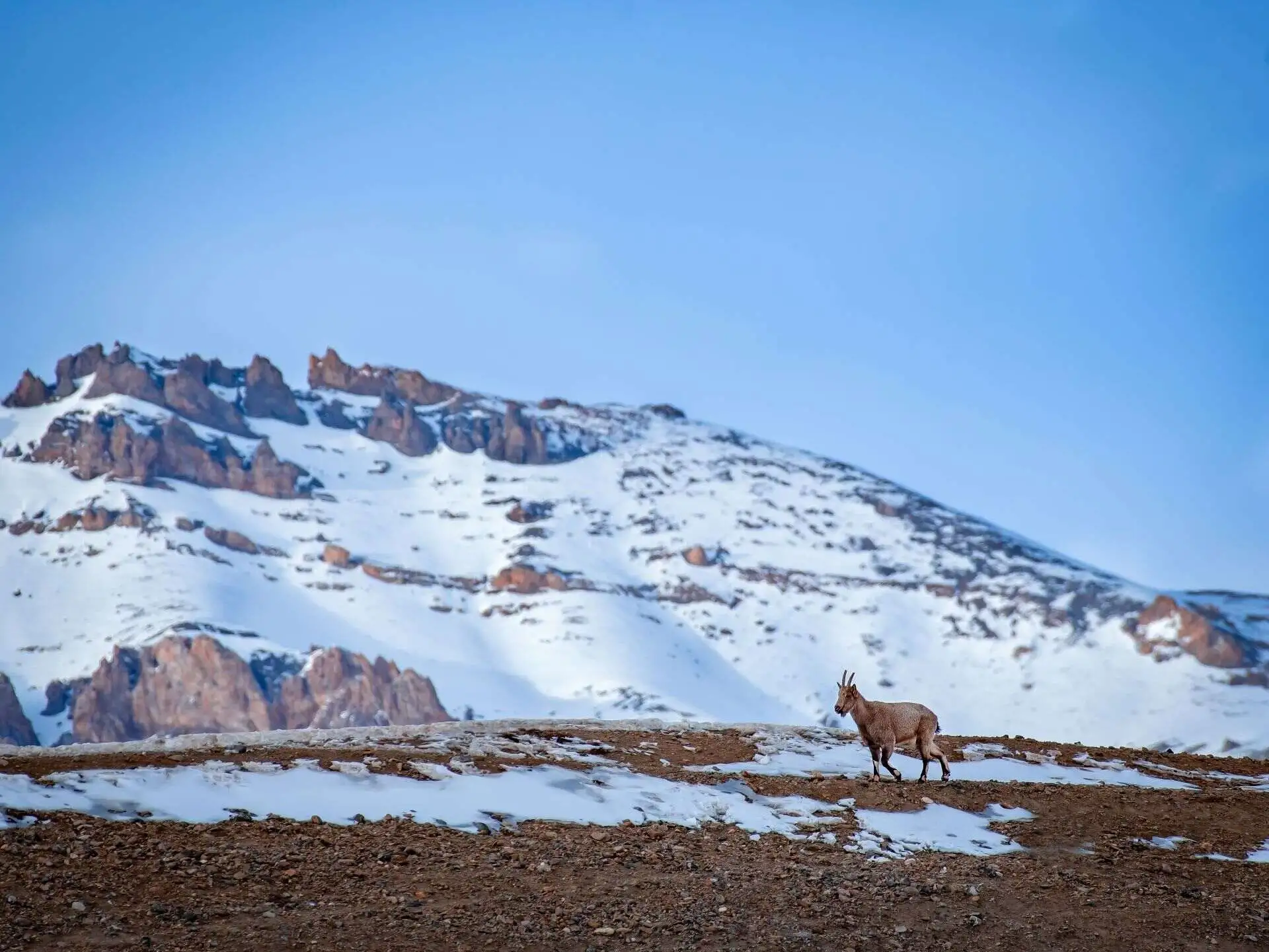
Key Facts:
- Where it lives: Found mainly in eastern Ladakh, especially near Hemis National Park and the Changthang Plateau. It prefers rocky cliffs and open alpine meadows above 3,500 meters.
- Size: Adult males can weigh up to 120 kg and have horns over 1 meter long! Females are smaller with thinner horns.
- What it eats: Mostly grasses, herbs, and shrubs found in the mountains.
- Horns: The horns are thick, ridged, and sweep backward in an elegant curve – used for dominance fights during the mating season.
- Behavior: Usually seen in small herds. Males often stay separate from females and young except during winter or breeding season.
Role in the Himalayan Web of Life
The Himalayan Ibex isn’t just surviving; it’s ensuring the survival of others.
- Prey for the Snow Leopard: This elusive predator relies heavily on the ibex for sustenance, particularly during harsh winters.
- Grazing Gurus: By feeding on shrubs and grasses, they play a key role in preventing overgrowth and maintaining balance in their habitat.
The presence of healthy ibex populations is a sign of a thriving Himalayan ecosystem. Without them, predators like the snow leopard would struggle to find food, causing ripple effects across the food chain.
Challenges They Face
Despite their incredible adaptations, the Himalayan Ibex faces numerous threats:
- Human Encroachment: Expanding settlements and grazing livestock are shrinking their habitats.
- Poaching: Hunted for their magnificent horns and pelts, ibex populations in some areas have declined.
- Climate Change: Warming temperatures disrupt the delicate balance of their high-altitude ecosystem.
These challenges not only threaten the ibex but also put other species like the snow leopard at risk.
Why They Matter
The ibex is an important part of the high-altitude food chain. It is a secondary prey species for snow leopards, especially in areas where bharal is less common. Its presence also signals a healthy, undisturbed habitat.
Fun Fact
Male Siberian ibexes use their huge horns to battle each other by rearing up and clashing in mid-air. You can sometimes hear the crack of horns echoing across the mountains!
Interesting Facts About the Himalayan Ibex
Here are some surprising details about these rugged herbivores:
- High Jump Experts: Ibex can leap nearly 6 feet vertically to evade predators.
- Social Creatures: Males and females live in separate groups for most of the year, only coming together during the mating season.
- Long-Lived Legends: In the wild, they can live up to 15 years if they evade predators and poachers.
- Record-Breaking Horns: Their horns are among the largest of any goat species, curving majestically up to a meter long.
The Himalayan Ibex is more than just a beautiful herbivore, it’s a keystone species that holds the fragile ecosystem of the Himalayas together. Protecting these creatures means safeguarding the entire mountain wilderness and all its inhabitants, including the enigmatic snow leopard.
So, next time you’re planning a snow leopard safari, keep an eye out for the graceful Himalayan Ibex. Their agility and resilience are a reminder of nature’s wonders and the urgent need to preserve them.


